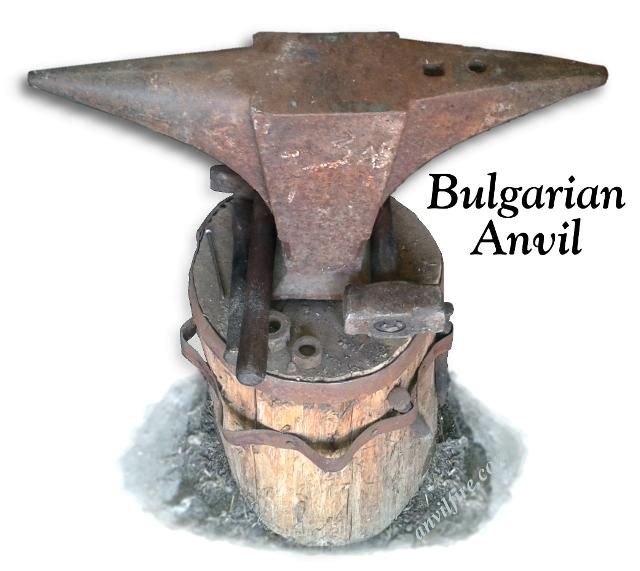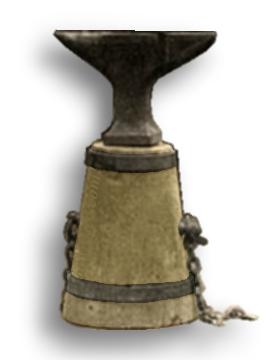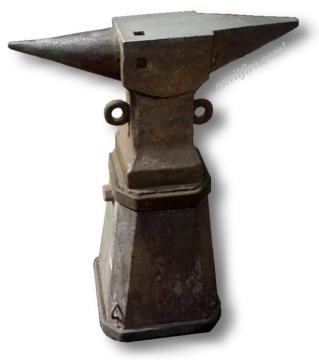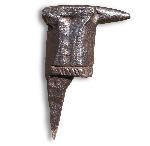Photo provided by Philip Greening Jackson, digitally processed by Jock Dempsey
This anvil was found in a dump or scrapyard in Bulgaria and purchased for 50 Leva (about $34 USD).
The stump it is set into is burried deep into the ground.
The work surface is similar to Italian anvils or or French bateau (boat) anvil, the difference being the anvil is raised on a heavy shank similar to Spanish bigornia de banco.
The difference between a "stake anvil" and a stake or bickern is that a stake anvil is a heavy use forging tool while
stakes and bickerns are designed for light work and sheet metal work.
There is no clear distinction between the two, however the Spanish call the light bickern a bigorneta (diminutive of bigornia - anvil).
I would but the dividing point at 100 pounds (45 kg).
The Spanish anvil above probably weighed about 200 pounds (90 kg) and the European anvil 250 to 350 pounds (112 to 260 kg) or more.
Both are carefully fitted to reinforced stands with anchor points to tie them down for transportation.
The great advantage to the three anvils on this page is the long significant mass directly under the face of the anvil.
This gives them a much greater forging efficiency for their weight than most anvils.





_tn.jpg)


städ, incus, aambeeld, batente, наковальня, наковалня